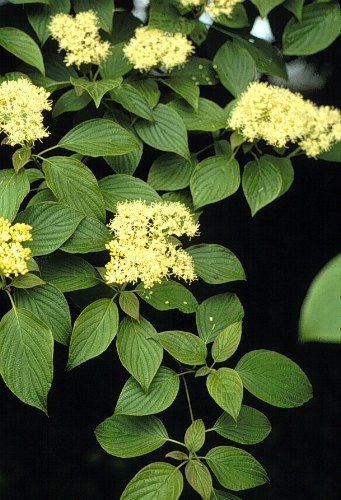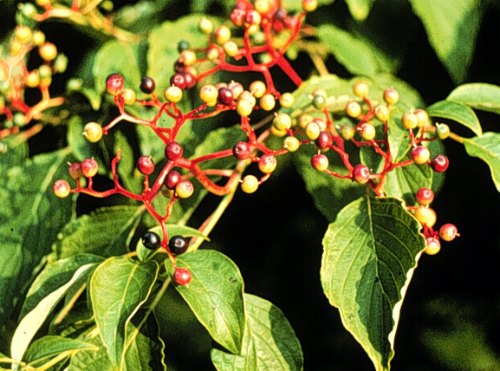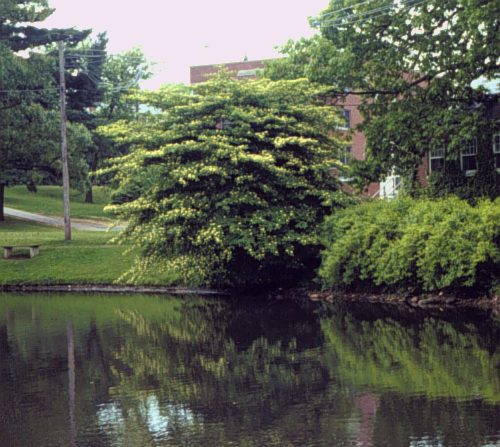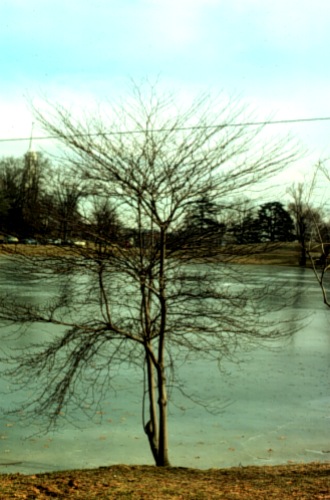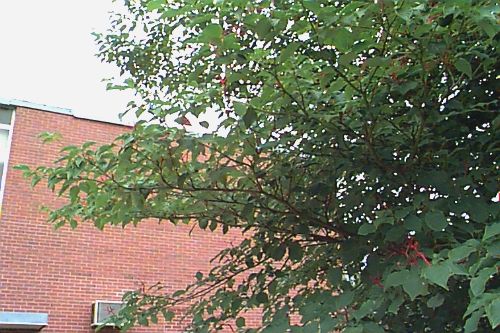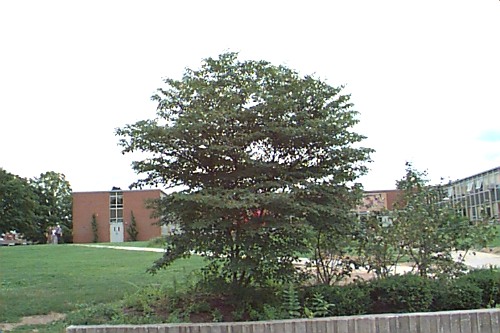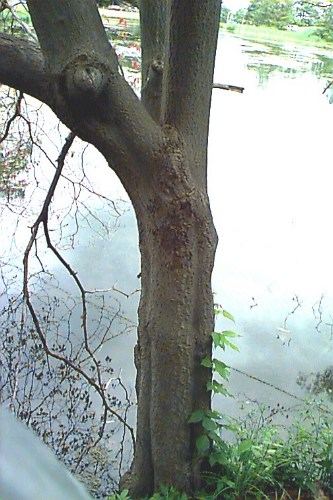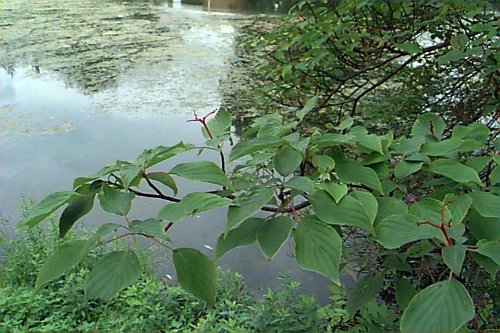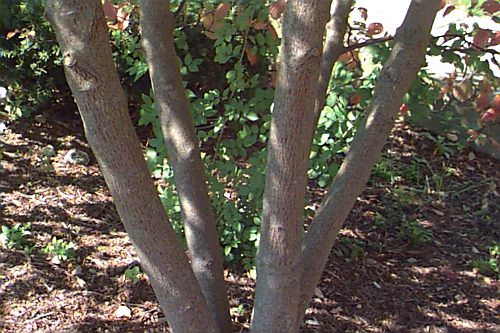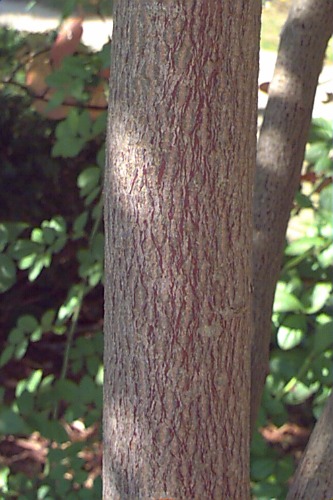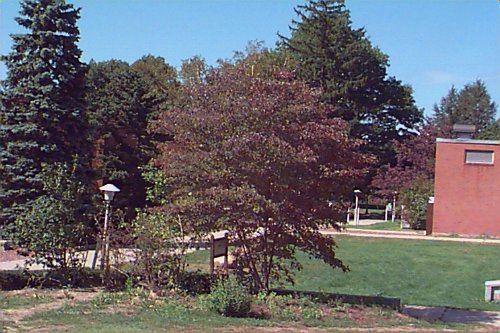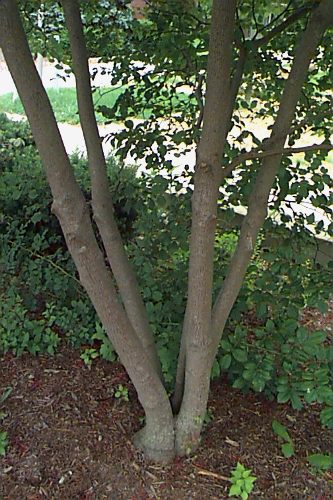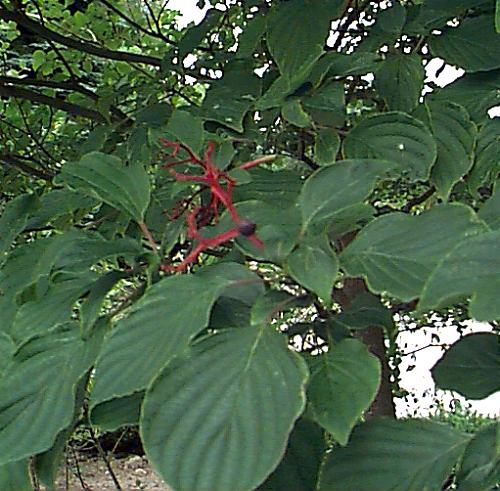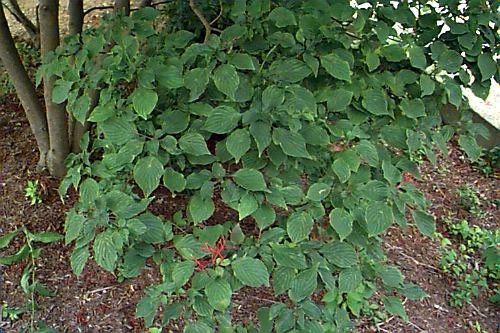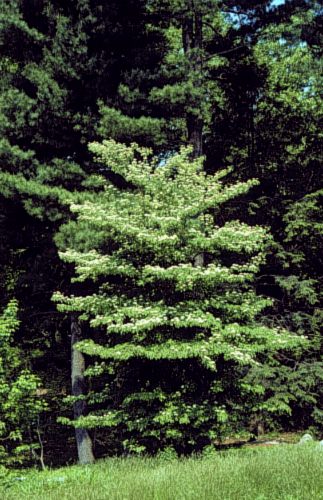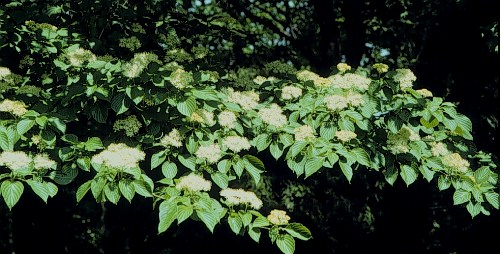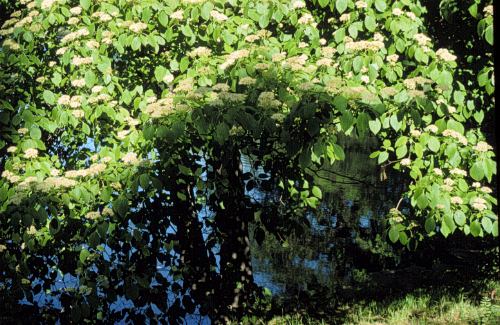Cornus alternifolia
Pagoda Dogwood
Cornaceae
ExpandHabitat
- native to the eastern United States
- zone 4
Habit and Form
- a small deciduous tree
- reaches a maximum height of around 25'
- has horizontal or tiered branching
- branching is also sympodial
- shape is often somewhat irregular, but can be more or less rounded
- loose and open density
Summer Foliage
- alternate leaf arrangement
- foliage typically whorled near the branch tips
- leaves are simple, elliptic with an acuminate tip
- leaves are 2" to 5" long and 1" to 2.5" wide
- fairly long petiole
- leaf color is medium to dark green
Autumn Foliage
- not developing an outstanding impact
- a mix of yellow with reddish purple mixing in
Flowers
- small, white flowers
- borne in flat clusters
- flowering occurs in late May and early June
- fragrant
- flowering can be described as moderately showy
Fruit
- changes from green to blue-black, passing through a reddish stage
- showy color develops in late July and august, but fruits don't persist long
- fruit stalks remains and turn a pleasing coral red color
Bark
- older bark is gray brown and lightly ridged and furrowed
- younger bark is smooth and reddish brown
Culture
- cool, moist, acidic soils are best
- partial shade is ideal
- full sun is acceptable if the site is not hot and dry
- performs best in colder climates
Landscape Use
- works best in naturalistic areas
- edges of woods
- edges of shaded waterways
- useful for its interesting horizontal branching
- as a specimen
Liabilities
- somewhat short-lived
- needs specific site requirements
- twig blight and canker are significant problems in some locations
ID Features
- a small tree or large shrub
- sympodial branching
- leaves whorled at the tips
- reddish frit stalks
- flat clusters of small white flowers in late spring
- smooth reddish-brown bark on young branches
Propagation
- by seed
- by cuttings
Cultivars/Varieties
'Argentea' (also sometimes listed as 'Variegata') - The only commonly available cultivar, it is a rare form that is difficult to propagate and therefore fetches a high price. It is a smaller, shrubby plant (to 15' tall) with layered branches and leaves that are handsomely variegated with a white margin. Specialty nurseries are beginning to offer this selection in greater numbers.
